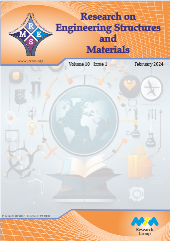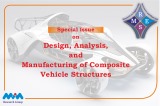Review Article
Self-healing concrete
techniques and performance: A review
Ahmed H. Ghazy1, Mohamed R. Emara2,3, Ahmed M. Abdellah1, Mohamed I.E. Attia1
1Department of Construction and Utilities, Zagazig University, Zagazig, Egypt
2Department of Structural Engineering, Zagazig University, Zagazig, Egypt
3Department of Civil Engineering, Delta Higher Institute for Engineering & Technology, Talkha, Egypt
Keywords
Abstract
Calcium carbonate;
Self-healing;
Concrete cracks;
Autogenous self-healing;
Autonomous self-healing
Modern society faces the duality of rapidly expanding structure, making concrete one of the world's most traded materials. However, cement manufacturing can pollute the environment by releasing approximately one tonne of CO2 for every tonne of cement produced. Concrete cracks can provide superior access for aggressive substances such as chlorides and sulfates, resulting in structural deterioration. So, to fix concrete cracks, different traditional methods were used, which use cement and some chemical agents that are hazardous to the environment. Because of the environmental issues and sustainability challenges associated with cement and concrete, it is preferable to reduce the amount of cement used by developing promising and unique solutions to enable quick crack healing in concrete and extend the structure's lifetime. Therefore, incorporating self-healing mechanisms into construction materials has been proposed to improve their performance and durability while reducing the need for maintenance and repair. This review assesses the performance and causes of autogenous and autonomous self-healing techniques. The autogenous technique occurs naturally due to inherent material properties, while the autonomous technique uses various healing agents, such as chemical or biological substances. Both techniques rely on forming calcium carbonate (CaCO3) crystals as the principal agent for concrete healing. Previous findings showed that the autogenous technique has limited efficacy in repairing larger cracks with a width exceeding 0.3mm. In contrast, autonomous techniques have shown successful repai of cracks exceeding 2mm in width. The application of an autonomous methodology in the field of concrete has resulted in significant results, such as effectively repairing large cracks, enhancing structural integrity, and substantially decreasing permeability levels from high to exceedingly low levels.
© 2023 MIM Research Group. All rights reserved.


